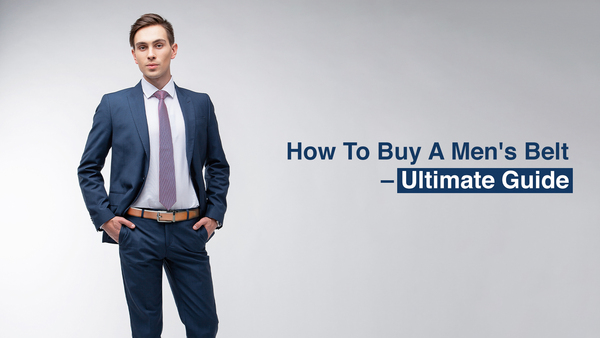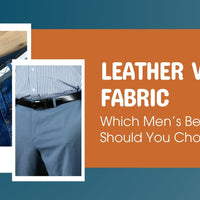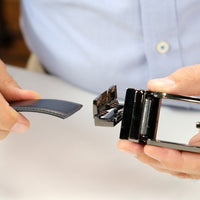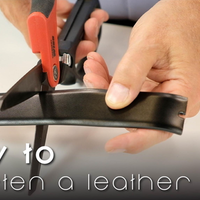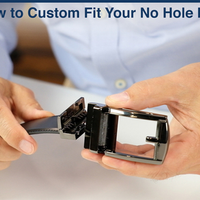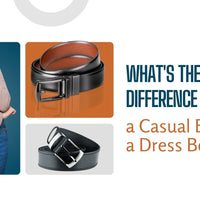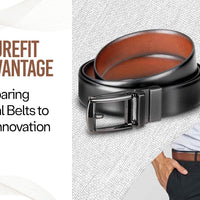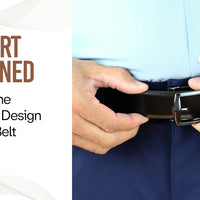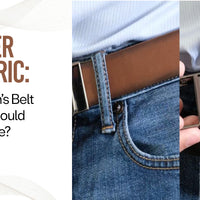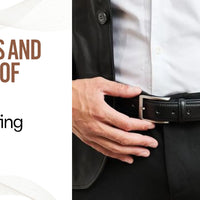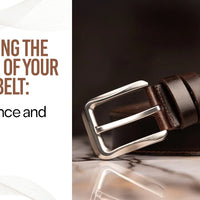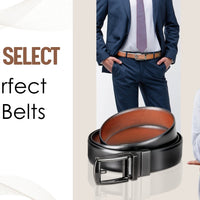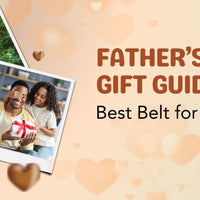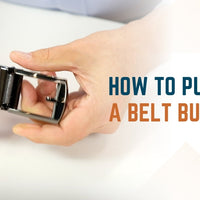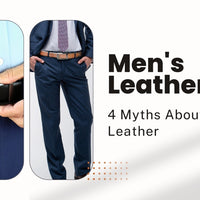Summary
-
Choosing the right belt involves considering size, width, material, and buckle style.
-
Dress belts are slimmer and more polished, while casual belts are wider and rugged.
-
Leather belts offer durability and timeless style, while synthetic materials provide affordability.
-
Adjustable belts, such as SureFit Belt, eliminate belt holes and provide a custom fit.
-
Proper maintenance, including cleaning and conditioning, extends the lifespan of a belt.
A belt is more than just a functional accessory. It serves as a defining element of style, tying an outfit together while providing practical support. Selecting the right belt requires consideration of several factors, including size, material, width, and buckle type.
A well-chosen belt enhances both formal and casual attire, making it a wardrobe essential. This guide outlines key aspects to consider when purchasing a men's belt, ensuring a perfect fit for any occasion.
Key Factors to Consider When Buying a Men’s Belt
Selecting a belt involves more than just choosing a design. Factors such as size, width, and material play a significant role in determining its comfort, durability, and overall appearance.
Belt Size
A properly sized belt enhances comfort and provides a polished look. Selecting the correct size prevents tightness or excessive overhang.
-
Measure the waist using a flexible measuring tape.
-
Add 2 inches to the waist size for an ideal fit.
-
Refer to a belt size chart to match waist measurements with the correct belt length.

Belt Width
Belt width impacts both style and functionality. The appropriate width depends on the occasion and personal preference.
-
Dress belts: Typically 1.25 inches wide, providing a sleek and refined appearance.
-
Casual belts: Range from 1.5 to 1.75 inches wide, offering a sturdier look suitable for jeans and chinos.
Belt Material
Material determines the belt’s durability, comfort, and aesthetic appeal. Leather remains the preferred choice for both formal and casual belts.
-
Full-grain leather: Premium durability and timeless style.
-
Genuine leather: Affordable but less durable than full-grain leather.
-
Synthetic materials: Cost-effective but prone to wear over time.
Buckle Style
The buckle type contributes to the belt’s overall functionality and style. Selecting the right buckle depends on personal preference and intended use.
-
Classic buckle: Traditional prong-style buckle that suits both casual and formal wear.
-
Automatic or ratchet buckle: Provides micro-adjustability without the need for belt holes (e.g., SureFit Belt).
Upgrade to a belt that fits perfectly every time. Explore SureFit Belt’s no-hole adjustable design!
Types of Men’s Belts
Understanding the different types of belts ensures a suitable choice for every outfit and occasion.
Dress Belts
Designed for formal occasions, dress belts feature a sleek and polished finish.
-
Material: Typically made from full-grain or top-grain leather.
-
Width: Narrower (1.25 inches) to complement formal attire.
-
Color choices: Classic shades like black, brown, and navy.
Casual Belts
Casual belts are versatile and suited for everyday wear.
-
Material: Available in leather, suede, or fabric.
-
Width: Wider (1.5–1.75 inches) for a rugged appearance.
-
Design: Often features textured finishes or decorative stitching.
Reversible Belts
A reversible belt offers two color options in one, increasing versatility.
-
Ideal for travelers and minimalists who prefer a multi-use accessory.
-
Common combinations include black/brown or tan/navy.
Adjustable Belts
Adjustable belts provide a customized fit, making them ideal for individuals with fluctuating waist sizes.
-
No-hole design ensures longevity by preventing wear and tear.
-
Ratchet or micro-adjustable buckles provide effortless adjustments.
-
SureFit Belt exemplifies this category with its innovative, hole-free design.
How to Choose the Right Belt for Your Outfit
Matching a belt to an outfit requires attention to color, material, and width.
Formal Attire
-
Match the belt color to the shoes (e.g., black belt with black dress shoes).
-
Choose full-grain leather for a polished look.
-
Opt for a slimmer belt width (1.25 inches).
Casual Wear
-
Experiment with textures, patterns, and colors.
-
Select a wider belt (1.5–1.75 inches) for a bold statement.
-
Pair with jeans, chinos, or shorts.
Business Casual
-
Stick to neutral tones such as black, brown, or tan.
-
Balance professionalism with subtle style.
-
Consider a reversible belt for added versatility.
Why Choose SureFit Belt?
SureFit Belt stands out with its innovative design and high-quality materials.

-
Premium Quality: Made from top-grain leather, it ensures long-lasting durability and a refined appearance.
-
Adjustable Fit: The micro-adjustable design allows for precise fitting, eliminating the hassle of traditional holes.
-
Reversible Design: Offering two color options in one belt, SureFit Belt provides versatility for different outfits.
-
Reliable Construction: The precision clamping system ensures effortless adjustments and prevents wear over time.
Key Takeaways
Selecting the right belt involves considering size, material, width, and buckle type. A high-quality belt enhances comfort and complements various outfits, making it a must-have accessory. Whether for formal events or everyday wear, the ideal belt should balance style, functionality, and durability. Adjustable options like the SureFit Belt offer convenience and longevity, ensuring a perfect fit for every occasion.

